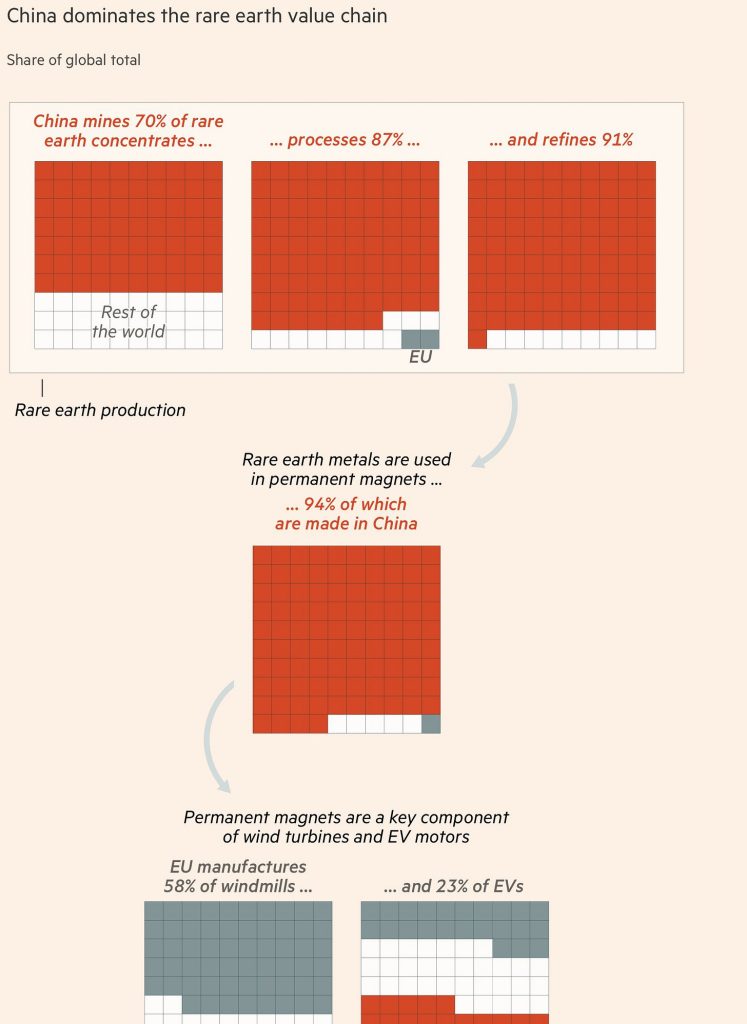By: Yale Bock
The infographics give us information about oil consumption from the largest global countries. The ability to produce as much of one’s own energy as possible is a strategic objective, if not a priority. The next best alternative would be to have readily available sources as close as possible to friendly countries. An analysis of the infographic makes it very clear which country is most advantaged.
The two that have distinct disadvantages happen to be the largest countries. As such, their political actions should at least take into consideration their resource situation. Resource availability has a crucial impact on understanding the economics of many industries. The most prominent example is artificial intelligence. Two areas that are crucial to it are semiconductors and energy. The ability to produce semiconductors in high volumes without defects is the primary factor for supplying the brains of computers and servers that run data centers. Semiconductors are also critical to the defense industry for use in precision-guided missiles, which are guided by GPS systems. The companies in Silicon Valley have long adopted the fabless production model, which means the large foundries that make the chips are dominated outside the US, primarily by one company. Recent moves by recent US administrations are trying to change this issue. In fact, the US announced a deal last month to make an equity investment in a prominent US company to help improve domestic semiconductor manufacturing capability.
Tied in with the artificial intelligence topic is the ability to supply the power to the data centers and also cool them. Natural gas, nuclear energy, and water are all the source elements involved with this dynamic. The race to construct data centers across the globe is the headline that has the investment world captivated by the immense backlog of orders of semiconductors. The ability to supply energy to power these massive buildings has energy companies in an excellent position, as natural gas is the primary source that will probably be used. Nuclear energy is seen as potentially an important provider as well. Water and coolant are needed, so those areas have also moved up in current investment perception.
In the defense and transportation area, China is the lead country to watch because of its dominant position in many rare earth materials. These elements are critical to supplying different components across the military and movement complexes.

The situation is clearly one that leaves the United States vulnerable, so the current administration is changing industrial policy to try and improve US competitiveness. Over the last few months, equity investments by the government into companies in different areas have piqued investor interest. Like the semiconductor area, the commonality is that changing the situation takes a long time. Large supply sources need plants to be able to process the raw materials, and the plants take a long time to get locations, funding, permitting, and then to be built. It is a dynamic not helped by dysfunctional governments, which can’t agree on where a bathroom is allowed, let alone who is legally permitted to be in the bathroom. Just look at the imminent US government shutdown as an example. Segments that are drawing enormous attention include rare earths, lithium, copper, steel, tin, helium, neodymium, and others. Makes you want to go back and rethink chemistry class, eh?
Originally posted on October 1, 2025 on YH&C Investment blog
PHOTO CREDIT: https://www.shutterstock.com/g/LaTerase
VIA SHUTTERSTOCK
DISCLOSURES:
Y H & C Investments may have positions in companies mentioned in this newsletter. Nothing in the newsletter should be taken as an offer to buy or sell individual securities. It is the responsibility of each investor to research the investments mentioned so they can decide on the appropriateness and suitability of the investments consistent with their risk tolerance, risk constraints, and return objectives




